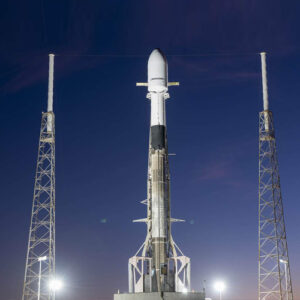Influential members of Congress have urged the Biden administration to move quickly and create a backup timing capability for GPS in separate letters to the Office of Management and Budget (OMB) and new Secretary of Transportation Buttigieg.
Danger and Benefits, and a Workable Solution
On March 1, Republican Reps. Sam Graves and Bob Gibbs wrote to the acting OMB chief, citing the risks of not having a backup as well as the advantages of having one. Graves is the ranking member of the Transportation and Infrastructure Committee in the House of Representatives.
They described backup GPS timing as “critical telecommunications infrastructure,” and said it is essential. “It is not a matter of whether, but when, our transportation, financial, and telecommunications infrastructure structures will fail,” says the study.
After explaining some of the risks to GPS, they concluded that America would be hit harder than many of its enemies if the system went down. Russia and China were cited as examples of countries with terrestrial backup systems for space-based PNT already in place.
The benefits of protection, autonomous and intelligent transportation systems, and “5G & Future Telecommunications” were also mentioned in the letter to OMB. GPS activity has resulted in a commercial passenger plane coming dangerously close to crashing, drone crashes, and white-hat hackers forcing cars off the road. A report by the Alliance for Telecommunications Industry Solutions (ATIS) called for a national timing solution to supplement GPS in the letter. A solution like this would “…allow for quicker 5G rollout and expand its scope to more Americans.”
Graves and Gibbs have discussed the DOT’s January report to Congress on the GPS Backup Technology Demonstration. The study recommended a system that included L band signals from space, terrestrial broadcasts in the Ultra High Frequency and Low Frequency spectra, and a fibre backbone to synchronise and feed precise time to terrestrial transmitters.
Studies and Unfulfilled Promises
A letter signed by Democratic House representatives, on the other hand, based on decades of administration research, a broken pledge, and a failure to obey the law.
Representatives Garamendi and Carbajal, as well as Transportation and Infrastructure Committee Chair Peter Defazio, wrote to DOT Secretary Buttigieg on February 25. The need for a GPS backup was first reported in a 2001 DOT study, according to the letter. Since then, “the Federal Government has conducted over 18 studies and issued guidelines calling for a land-based, wireless national backup system.” Officials from the Department of Homeland Security called the country’s over-reliance on GPS “a single point of weakness” for critical infrastructure in 2014.
When the Obama administration announced in 2015 that it would develop an eLoran timing system and follow it up with a wider approach to GPS vulnerability, Congress was encouraged. “This well-reasoned solution gave Congress hope that this national security issue will be resolved at long last.”
“However, in 2018, after no further action had been taken, Congress took responsibility for codifying the commitments outlined in the 2015 letter, and passed the National Timing Resilience and Security Act (NTRSA) to introduce the land-based timing back-up mechanism on a virtually unanimous bipartisan basis in both Houses.”
The administration was also nudged on this topic by Congress in last year’s appropriations, according to the letter. The act for 2021 included funding for six new DOT staff roles to support the initiative, as well as instructions to the department about how to fill them.
Positioning and timing
According to observers, the capabilities introduced in NTRSA to meet the terrestrial timing requirement would almost certainly also include a positioning capability independent of GPS.
DOT must “… integrate the suggestions from any GPS back-up demonstration programme” into the solution package, according to the NTRSA. The demonstration report’s recommended technology combination will provide users with one or more terrestrial services from which location can be determined.
In order to use wireless timing signals, mobile devices must also be aware of their position. To provide these users with a reliable timing service, location information independent of space-based signals is needed.




